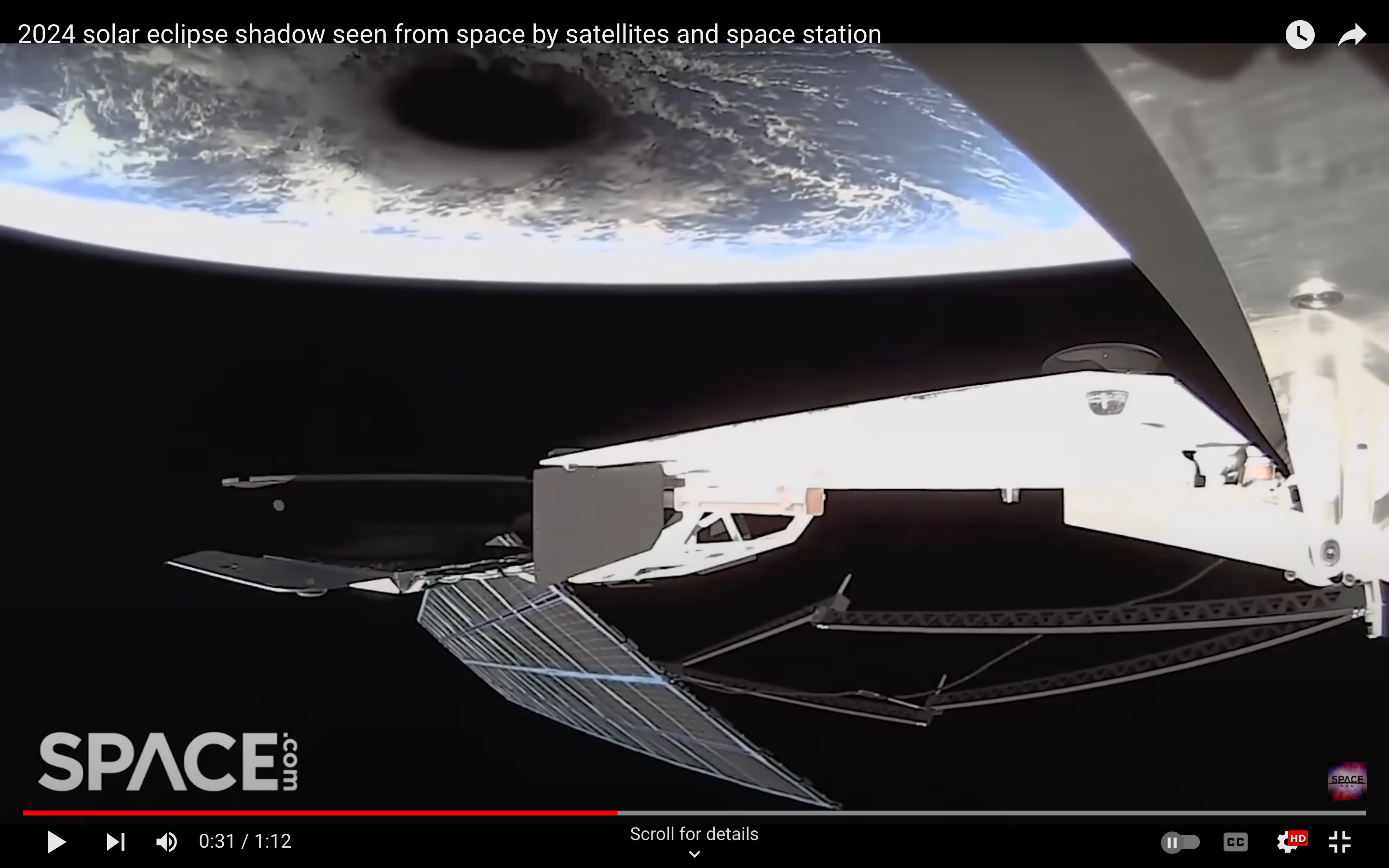Obviously, Starlink satellites are equipped with sensors for attitude and location detection (like a star tracker or sun tracker) but I'm wondering if they have with any direct Earth observation equipment, specifically cameras (even with only a low spacial resolution).
-
$\begingroup$ I would have used "Can StarLink satellites see us?" for the title, but then again I would have also used Is the ISS a tennis racket? :-) $\endgroup$– uhohCommented Mar 21, 2020 at 2:47
-
$\begingroup$ that title, how does that make sense when you read it? $\endgroup$– TopcodeCommented Apr 1, 2020 at 20:36
-
1$\begingroup$ Considering atmospheric distortion, and the fact that you can photograph andromeda with a modern smartphone and image stacking, I'm thinking that there could be countless applications for tracking space debris, an monitoring for supernovae... even with nothing but a mobile phone camera... it would, after all, be plugged into a high bandwidth backbone. And considering this possibility, I'm almost sure they do... because why wouldn't they? $\endgroup$– DagelfCommented Feb 9, 2022 at 19:02
-
$\begingroup$ Example footage: View of the eclipse from orbit (Elon Musk, X, Apr 2024) $\endgroup$– mykhalCommented Apr 9 at 14:19
4 Answers
As of October 2022 it appears that yes there can be cameras that produce still and video images for downlink.
As reported by CNET here on 7th October 2022 Elon Musk tweeted a still image and a video clip of a re-entry burn as seen from a Starlink satellite. The camera appears positioned to observe the solar panel operation and as such has a very wide, almost 180 degree field of view, and once unfolded it would appear the panel will occupy much of that. It is unclear if all satellites have this camera fitted or just some. The fact that the tweeted images include a chain of satellites may mean a small number of camera equipped satellites monitor the overall flock deployment.
The best that this sort of camera could do would be km resolution, possibly useful for weather or environmental monitoring purposes but would need a very different lens assembly to make a 'spy sat', at least akin to a telephoto lens on a consumer DLSR which would be complex to fit into the notably thin Starlink chassis.
It is worth noting that there are already constellations of small imaging satellites like Dove which would make adding several kg of long lens optics to a communications constellation a questionable business decision.
-
$\begingroup$ Pics or it didn't happen :-). Nice find! $\endgroup$ Commented Oct 30, 2022 at 20:20
-
$\begingroup$ Great find, makes sense that SpaceX would have a wide-angle "engineering" camera to observe the mechanical operation of the satellite from, as including a "smartphone"-class camera shouldn't impact the mass budget too much. $\endgroup$ Commented Oct 31, 2022 at 12:31
-
$\begingroup$ I think you can consider adding an answer to How common is it for spacecraft to have "selfie" capability? $\endgroup$– uhohCommented Jan 14 at 19:58
-
-
$\begingroup$ @martin - what aspect is concerning? You may want to post a new question if that is an area of interest. Note per the text there all these cameras can spy on is if your country is still there due the wide angle lens. If your concern was being watched from space you should be looking more at the Planet Lab and Maxar constellations. $\endgroup$ Commented Aug 31 at 2:15
Yes, they do. Spaceflight Now reports, via a 2019 May 15 press kit from SpaceX, that
The satellites also host optical trackers to detect space debris, allowing the craft to autonomously avoid collisions with other objects in space.
Such a tracker would see the Earth much of the time, being in such a low orbit.
SpaceX's press release dated "May 2019" says that
each spacecraft is equipped with a Startracker navigation system that allows SpaceX to point the satellites with precision. Importantly, Starlink satellites are capable of tracking on-orbit debris and autonomously avoiding collision.
The cameras might not be part of the "Startracker navigation system" per se. NASA says, without mentioning any onboard sensors, that
The Startracker navigation system is based on the heritage of Dragon. The satellites are designed [to] autonomously avoid collisions based on uplinked tracking data.
-
3$\begingroup$ Given this combination of three statements, wouldn't it be reasonable to conclude that the satellites do not have any "direct Earth observation equipment"? It seems to me that Spaceflight Now misinterpreted the SpaceX press release: the "autonomous collision avoidance" only relies on uplinked tracking data, and the only optical system is the star tracker, which would (ideally) never see the Earth. $\endgroup$– ChrisCommented Apr 7, 2022 at 0:16
Yes, they do, at least in the form of star tracker cameras that have sometimes pointed at the Earth. On 2020 April 28, SpaceX reported that
We're currently testing rolling the satellite so the vector of the Sun is in-plane with the satellite body, i.e. so the satellite is knife-edge to the Sun. ... The star tracker cameras are located on the sides of the chassis. Rolling knife edge to the Sun can point one star tracker directly at the Earth and the other one directly at the Sun...
Yes and they make nice Earth-observation eclipse videos!
The Video From Space Apr 9, 2024 video "2024 solar eclipse shadow seen from space by satellites and space station" includes footage labeled "Starlink Satellite" and shows the umbra moving across the Earth's surface from the perspective of a satellite in LEO. It also shows some hardare including a solar panel's articulation which may help verify this is indeed a Starlink.
Excellent follow-up puzzler question: "Which Starlink satellite was in this position to make this video?"
